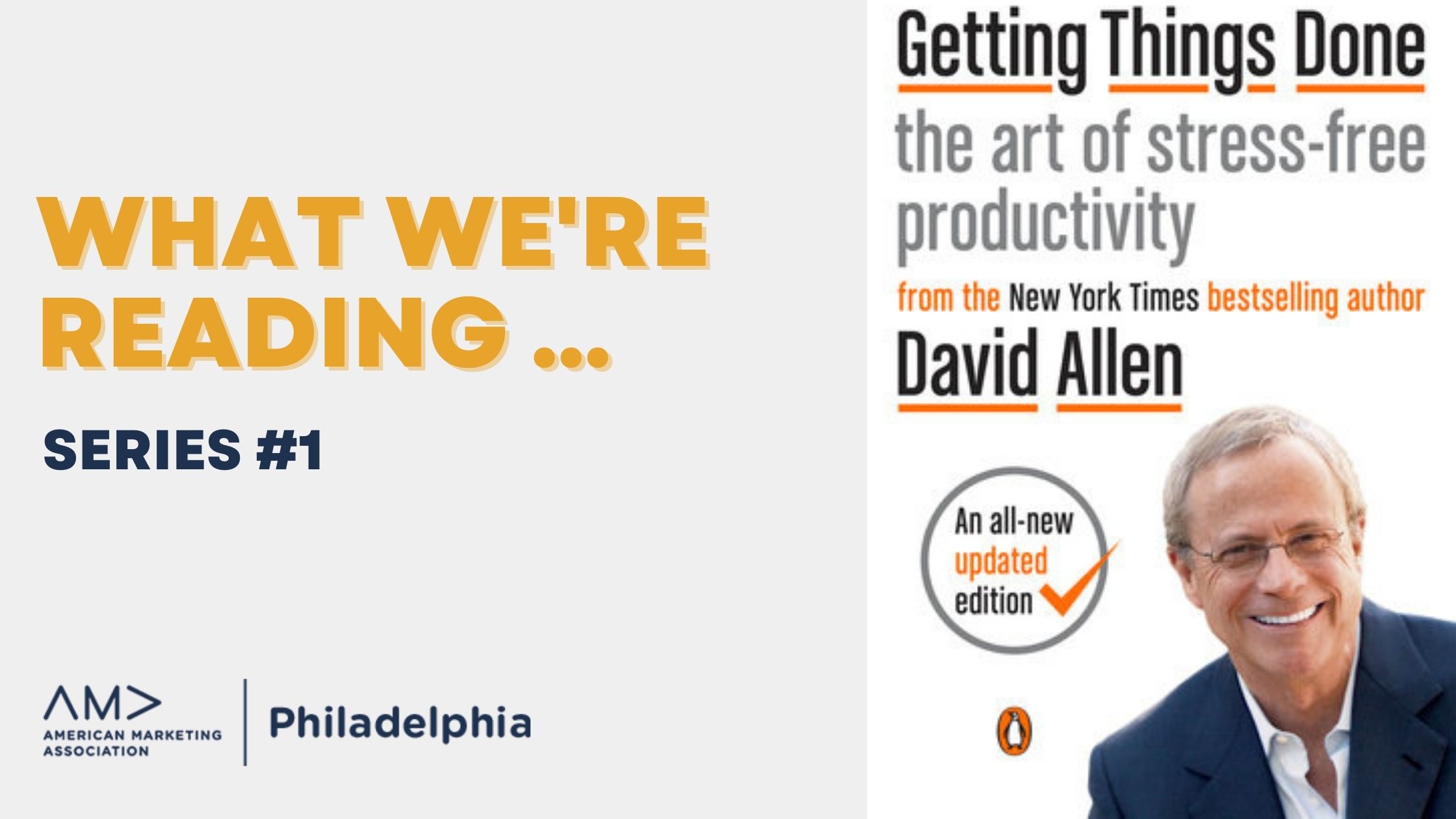Series #1: Getting Things Done: The Art of Stress-Free Productivity
By David Allen
Less stress! I hear so many people mentioning this. In today’s fast paced world, we have many obligations and different details to handle at once. Many people struggle with balancing those commitments. In his book, Getting Things Done: The Art of Stress-Free Productivity, David Allen addresses this issue. Written in 2001 and revised in 2015, it remains a good handbook for a successful, happy life in our increasingly busy world.
Clarity for Productivity
Allen takes the position that creativity is unleashed when the mind is clear. This is when we are the most productive and free to have the “aha” moment. It’s what athletes describe as “being in the zone.” We think of solutions that people call out of the box, we work efficiently, and relationships with coworkers, family, and friends work smoothly. We can control the details, gain clarity of mind, unclutter the work environment, and unleash mental creativity.
In order to achieve these lofty goals regularly, Allen suggests following an easy, step-by-step process. It takes slowing down, focusing, and making a commitment to do what are sometimes very simple actions. The process involves taking each detail, one at a time, analyzing its purpose, importance, and meaning, then organizing all the results. When things are clear, we are free to choose where to focus our attention and which detail to work on. Allen outlines his system clearly and gives concrete examples of how people have benefited from it.
The Natural Flow of Time Management
He also encourages readers to be kind to themselves when creating these new habits. The idea is that there is a natural flow – of finally getting things organized, events that can happen to disrupt our flow, and the inevitable re-organization that must occur. He concludes with a warning that life is moving increasingly faster and that using this system provides tools to gain peace of mind.
My one criticism is that Part 1 focuses too much on theory. A new reader might want to skim through it and focus on the action steps outlined in Part 2, which is the heart of the book. This section is the most practical, as the steps are easy to follow and doing this work can produce results quickly. Part 1, and the future planning described in Part 3, can be investigated in depth later.
“Your head is for having ideas, not for holding them.”
To my way of thinking, the author is a guru worth considering. Allen is a veteran coach and management consultant who once said, “Your head is for having ideas, not for holding them.” With more than thirty-five years’ experience, he has a diverse list of clients such as New York Life, the World Bank, the Ford Foundation, L.L. Bean, and the U.S. Navy. He is a New York Times Bestselling Author, and has been featured in such diverse publications as Fast Company, Fortune, Los Angeles Times, and The Wall Street Journal. Getting Things Done has been sold in more than 35 countries.
In the very overcrowded genre of time management and self-improvement, this book stands out as practical, clear, inspirational, and easy to follow. I was personally struggling with an abundance of paper – notes from meetings, reading material, business cards, and sticky notes. I had notes and appointments scattered around my calendar, in project folders, and in my head. When a friend/client gifted me this book, it changed my business life. I gained control. Now, I hit deadlines with ease and have peace of mind with both what I do and leave undone. You can follow the instructions closely and tailor the system to fit your own particular situation.
For me, it is a classic and stands the test of time. This is one of those books to keep on your shelf as a reference.
_____________________________________________________________________________________________________
Want to expand your marketing knowledge even farther? Check out other books in our “What We’re Reading Series,” such as The New Chameleons: How to Connect with Consumers Who Defy Categorization.
